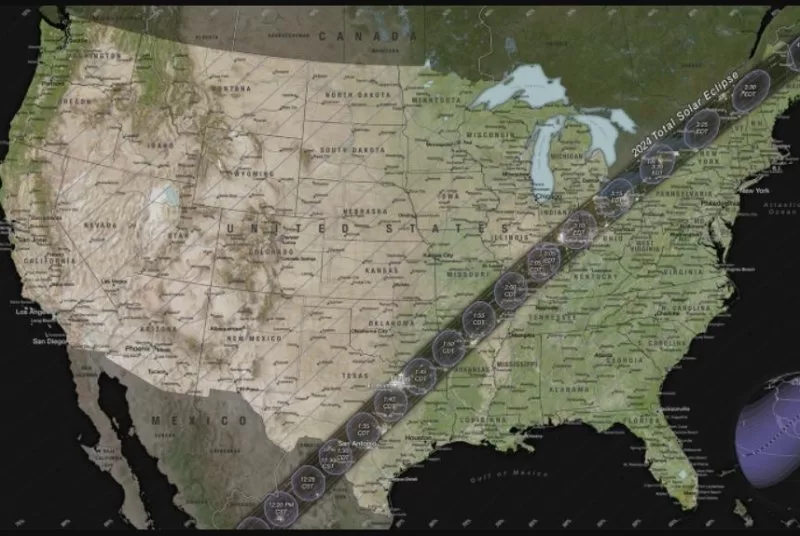March 29 (UPI) — NASA said Friday that when the moon passes in front of the Sun April 8, most of North America will be able to see it in some degree.
Millions living along the path of totality stretching from Texas to Maine will be able to see a total eclipse. Outside of that band, people in the United States will have a chance to see a partial solar eclipse.
To help the public witness and learn more about this event, NASA is inviting the public to participate with in-person events, opportunities to experience NASA science, and even multiple ways to see it streaming online.
NASA’s three-hour coverage will include live views of the eclipse from multiple points across North America, appearances by NASA experts, astronauts aboard the International Space Station, and an inside look at NASA’s eclipse science experiments. There also will be watch parties throughout the country, NASA said.
Agency officials said a live broadcast also will come from the agency’s only center in the path of totality — NASA’s Glenn Research Center in Ohio.
The agency also is planning to present a “no-commentary, telescope-only feed” of the event on NASA Television’s media channel and YouTube, starting at 1 p.m.
The telescope feed will incorporate views from locations including Cleveland, Dallas, Niagara Falls and more. One telescope feed will come from Mazatlán, Mexico.
NASA’s broadcast will stream on NASA+, on NASA TV, and at the agency’s website.
NASA warned that it’s not safe to view the eclipse through a camera lens, telescope or binoculars unless a special-purpose solar filter is attached. Looking at it without that filter will “instantly cause severe eye injury,” according to NASA.
In order to safely view a partial eclipse you have to have safe solar viewing glasses sometimes called “eclipse glasses.” NASA warns these are NOT regular sunglasses.
Safe solar viewers are a thousand times darker and should comply with the ISO 12312-2 international standard.
“Do NOT look at the Sun through a camera lens, telescope, binoculars, or any other optical device while wearing eclipse glasses or using a handheld solar viewer – the concentrated solar rays will burn through the filter and cause serious eye injury,” Nasa said.
If people don’t have eclipse glasses or a handheld solar viewer they use an indirect method that does not look directly at the Sun.
” One way is to use a pinhole projector, which has a small opening (for example, a hole punched in an index card) and projects an image of the Sun onto a nearby surface. With the Sun at your back, you can then safely view the projected image.,,” NASA said. “Do NOT look at the Sun through the pinhole!”
NASA will have live coverage of the eclipse beginning at 1 p.m. EDT streaming on NASA+, NASA TV and the agency’s website.
It will feature live views of the eclipse across America, views from the space station and special appearances by NASA experts.
